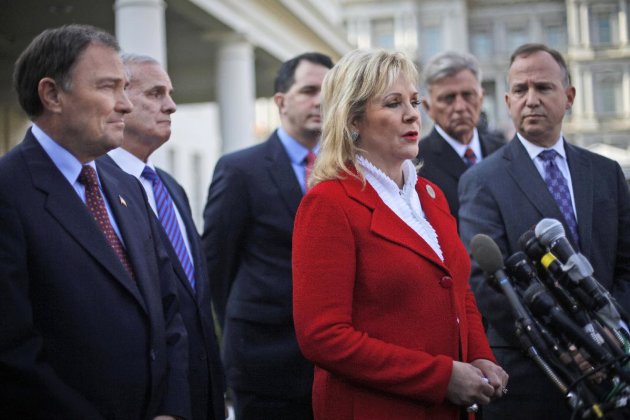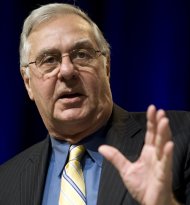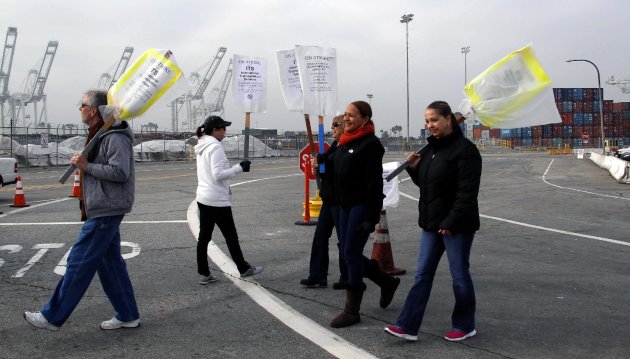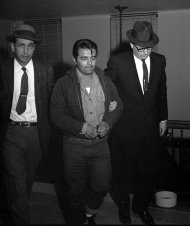
The bacterial zoo inside your gut
could look very different if you're a vegetarian or an Atkins dieter, a
couch potato or an athlete, fat or thin.
Now for a fee — $69 and up — and a stool sample, the curious can find out just what's living in their intestines and take part in one of the hottest new fields in science.
Wait a minute: How many average Joes really want to pay for the privilege of mailing such, er, intimate samples to scientists?
A lot, hope the researchers running two novel citizen-science projects.
One, the American Gut
Project, aims to enroll 10,000 people — and a bunch of their dogs and
cats too — from around the country. The other, uBiome, separately aims
to enroll nearly 2,000 people from anywhere in the world.
"We're finally enabling people to realize the power and value of
bacteria in our lives," said microbiologist Jack Gilbert of the
University of Chicago and Argonne National Laboratory. He's one of a
team of well-known scientists involved with the American Gut Project.
Don't be squeamish: Yes, we share our bodies with trillions of
microbes, living communities called microbiomes. Many of the bugs,
especially those in the intestinal tract, play indispensable roles in
keeping us healthy, from good digestion to a robust immune system.
But which combinations of bacteria seem to keep us healthy? Which
ones might encourage problems like obesity, diabetes or irritable bowel
syndrome?
And do diet and lifestyle affect those microbes in ways that we might control someday?
Answering those questions will
require studying vast numbers of people. Getting started with a
grassroots movement makes sense, said National Institutes of Health
microbiologist Lita Proctor, who isn't involved with the new projects
but is watching closely.
After all, there was much interest in the taxpayer-funded Human
Microbiome Project, which last summer provided the first glimpse of what
makes up a healthy bacterial community in a few hundred volunteers.
Proctor, who coordinated that project, had worried "there would be a
real ick factor. That has not been the case," she said. Many people
"want to engage in improving their health."
Scott Jackisch, a computer consultant in Oakland, Calif., ran across
American Gut while exploring the science behind different diets, and
signed up last week. He's read with fascination earlier microbiome
research: "Most of the genetic matter in what we consider ourselves is
not human, and that's crazy. I wanted to learn about that."
Testing a single stool sample costs $99 in that project, but he
picked a three-sample deal for $260 to compare his own bacterial makeup
after eating various foods.
"I want to be extra, extra well," said Jackisch, 42. Differing gut
microbes may be the reason "there's no one magic bullet of diet that
people can eat and be healthy."
It's clear that people's gut bacteria
can change over time. What this new research could accomplish is a
first look at how different diets may play a role, "a much better
understanding of what matters and what doesn't," said American Gut lead
researcher Rob Knight of the University of Colorado, Boulder.
"We don't just want people that have a gut-ache. We want couch
potatoes. We want babies. We want vegans. We want athletes. We want
anybody and everybody because we need that complete diversity," added
American Gut co-founder Jeff Leach, an anthropologist.
One challenge is making sure participants don't expect that a map of
their gut bacteria can predict their future health, or suggest lifestyle
changes, anytime soon.
"I understand I'm not going to be able to say, 'Oh, my gosh, I'll be
susceptible to this,'" said Bradley Heinz, 26, a financial consultant in
San Francisco. He is paying uBiome $119 to analyze both his gut and
mouth microbiomes; just the gut is $69.
"The more people that participate, the more information comes out and the more that everybody benefits," he added.
Participants can sign up for
either project via the social fundraising site Indiegogo.com over the
next month. They also can send scrapings from the skin, mouth and other
sites, to analyze that bacteria. Sign up enough family members or body
sites, or be tracked over time, and the price can rise into the
thousands. American Gut researchers plan some free testing for those who
can't afford the fees, to increase the experiment's diversity.
Don't forget the pets: "We sleep
with them, play with them, they often eat our food," Leach said. What
bacteria we have in common is the next logical question.
Already, American Gut researchers
are preparing to compare what they find in the typical U.S. gut with a
few hundred people in rural Namibia, who eat what's described as
hunter-gatherer fare. Also, Leach will spend three months living in
Namibia next year, and is storing his own stool samples for
before-and-after comparison.
But diet isn't the only factor.
Your bacterial makeup starts at birth: Babies absorb different microbes
when they're born vaginally than when they're born by C-section, a
possible explanation for why cesareans raise the risk for certain
infections. Taking antibiotics alters this teeming inner world, and it's
not clear if there are lasting consequences, especially for young
children.
Then there's your environment,
such as the infections spread in hospitals. In February, a new
University of Chicago hospital building opens and Gilbert will test the
surfaces, the patients and their health workers to see how quickly bad
bugs can move in and identify which bacteria are protective.
Whatever the findings, all the research marks "a huge teachable moment" about how we interact with microbes, Leach said.

















 Kate
Middleton, the Duchess of Cambridge, is pregnant with a child who will
be in a direct line to inherit the throne of England. The news is not
all good, as the Duchess has been hospitalized for treatment of
hyperemesis gravidarum, or severe and debilitating morning sickness. The
New York Times spoke with Dr. Marlena Fejzo, an obstetrics researcher
and former H.G. sufferer, about the condition.
Kate
Middleton, the Duchess of Cambridge, is pregnant with a child who will
be in a direct line to inherit the throne of England. The news is not
all good, as the Duchess has been hospitalized for treatment of
hyperemesis gravidarum, or severe and debilitating morning sickness. The
New York Times spoke with Dr. Marlena Fejzo, an obstetrics researcher
and former H.G. sufferer, about the condition.





